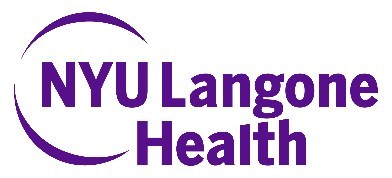Living in a high-income neighborhood, having private health insurance, and being older are tied to an increased likelihood that life support will be withdrawn for people who have suffered severe bleeding in the brain, a new study shows.
NEW YORK, Jan. 18, 2024 /PRNewswire/ -- Living in a high-income neighborhood, having private health insurance, and being older are tied to an increased likelihood that life support will be withdrawn for people who have suffered severe bleeding in the brain, a new study shows.
Led by researchers at NYU Grossman School of Medicine, the study focused on the social and economic factors linked to the withdrawal of life support and related death after being hospitalized for intracerebral hemorrhages. Such bleeds, sometimes referred to as hemorrhagic stroke, often lead to swelling in the brain, which can put a patient into a coma and frequently cause death.
Previous studies had identified racial and religious disparities in death rates after such hemorrhages, with higher rates seen among Black and Hispanic patients and patients with deeply held religious beliefs.
The study authors say their new work, published in the journal Neurology online Jan. 18, is important because it offers a better understanding of disparities that may help physicians to tailor end-of-life conversations with patients’ families, with the goal of removing age, racial, and economic disparities in health care.
Unlike ischemic stroke, which is caused by blocked blood vessels that can be cleared in many cases, hemorrhagic strokes are more often deadly. Some hemorrhagic stroke patients may undergo surgery to minimize the effects of swelling. In most cases, however, recovery is limited, and many patients need life-sustaining assistance with breathing and feeding. For these reasons, many patients and their families choose to withdraw life support.
For the new study, researchers examined the medical records of 868 patients admitted to three NYU Langone Health hospitals in Manhattan, Brooklyn, and Long Island for intracerebral hemorrhage from 2017 through 2022. Most were seniors and men of all races, with half relying on Medicare and one in five on Medicaid. While many survived their severe brain bleed and were discharged home or to a rehabilitation or nursing facility, 148 did not, and most of the decedents (84%) had had their life support, including ventilators and feeding tubes, withdrawn during their hospital stay.
The researchers found that hemorrhagic stroke patients living in city neighborhoods with higher incomes (i.e., above a yearly median of $88,687) were as much as 88% more likely to have life support withdrawn and to die subsequently than those living in poorer parts of the city (i.e., with yearly median incomes below $70,784). Being older than age 77 and on Medicare also heightened chances of having life support ended.
By contrast, being Black and having private insurance were factors tied to a lower likelihood of life support being withdrawn. Among hospitalized hemorrhagic stroke patients, Blacks made up 7% of those who had life support withdrawn but counted for 18% of those who maintained life support. Similarly, while 37% had private health insurance, only 20% of those who decided to withdraw life support had private insurance.
Among the other study findings, Christians, especially Catholics, were 10% more likely to have life support withdrawn poststroke than maintained, and Jewish patients were 15% more likely to have life support maintained than withdrawn.
“Our study results highlight the many complex social, economic, religious, and racial factors that may play a role in decision making after a patient has suffered a severe bleed in the brain, or hemorrhagic stroke, and dies after withdrawal of life support,” said study lead investigator and neurologist Kara Melmed, MD.
Melmed, a clinical assistant professor in the Departments of Neurology and Neurosurgery at NYU Langone, says that while it has long been known that socioeconomic factors play a role in health and how well people recover, the role of these factors, beyond religion and race, have not until now been explored in detail for patients with intracerebral hemorrhages.
Further research is needed, the researchers say, because death is far more common in hemorrhagic stroke than in ischemic stroke.
Strokes of all kinds in the United States are not only a leading cause of death, but are also a health care disparity concern because strokes are twice as common in Blacks than in non-Blacks.
“Knowing that socioeconomic factors, especially income, play a role in hemorrhagic stroke outcomes is the first step in comprehending why these imbalances exist and how best to address them to make health care more equitable,” said senior study investigator and neurologist Jennifer Frontera, MD.
“Seeing any kind of disparity in health care is concerning,” said Frontera, a professor in the Department of Neurology at NYU Langone. “Clinicians in future may need to tailor end-of-life care discussions, taking into account cultural and social factors when treating patients who have suffered an intracerebral hemorrhage and, in particular, with respect to withdrawing life support.”
Besides Melmed and Frontera, other researchers at NYU Langone involved in this study, which was self-funded by the health system, are Ariane Lewis, MD; Lindsey Kuohn, MD; Joanna Marmo, BSN, RN, SCRN; Nirmala Rossan-Raghunath, MSN, SCRN; Jose Torres, MD; Rajanandini Muralidharan, MD; Aaron Lord, MD; and Koto Ishida, MD.
Media Inquiries:
David March
212-404-3528
david.march@nyulangone.org
![]() View original content to download multimedia:https://www.prnewswire.com/news-releases/household-income-and-health-insurance-among-factors-in-decision-to-withdraw-life-support-after-hemorrhagic-stroke-302038812.html
View original content to download multimedia:https://www.prnewswire.com/news-releases/household-income-and-health-insurance-among-factors-in-decision-to-withdraw-life-support-after-hemorrhagic-stroke-302038812.html
SOURCE NYU Langone Health System





